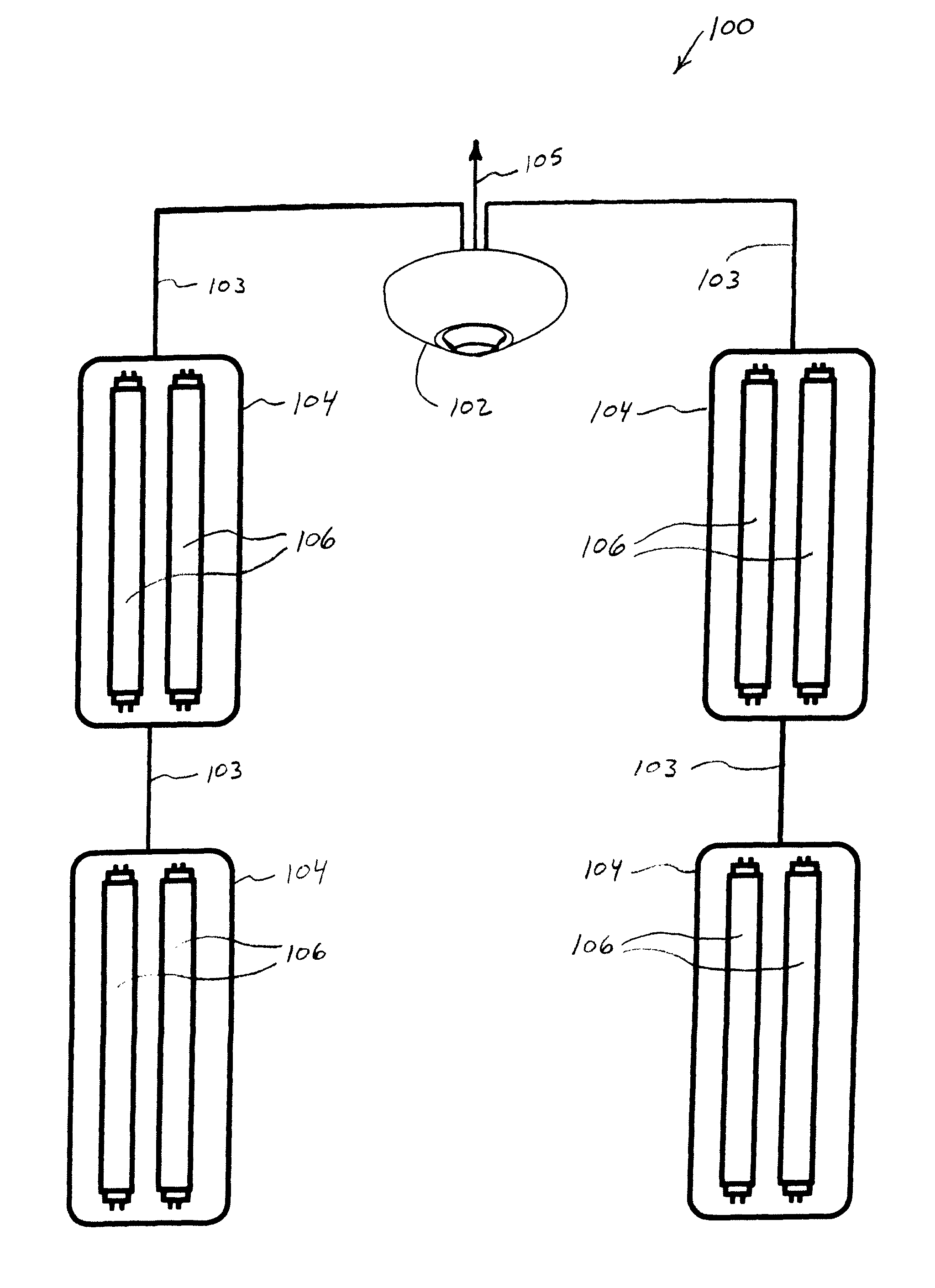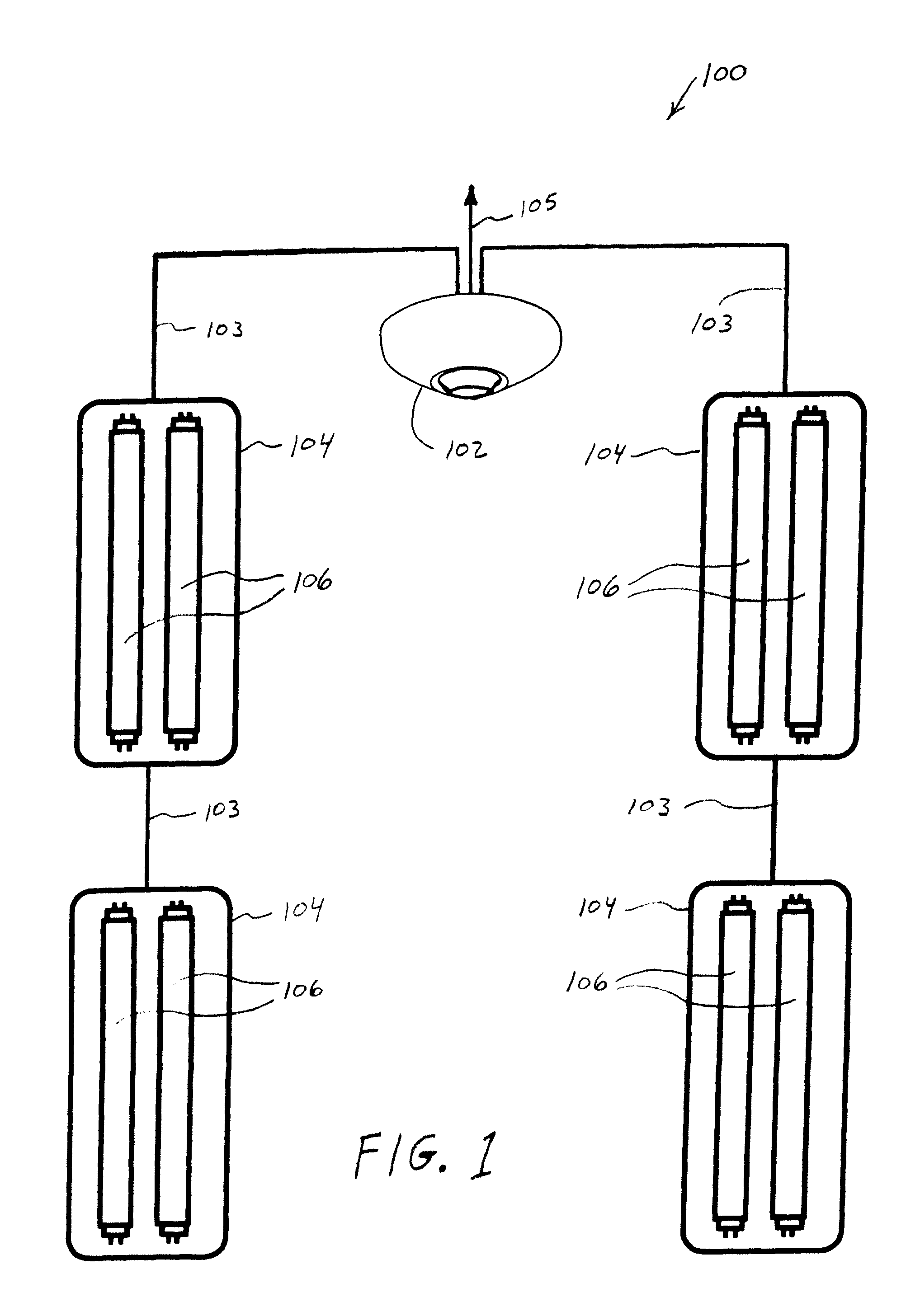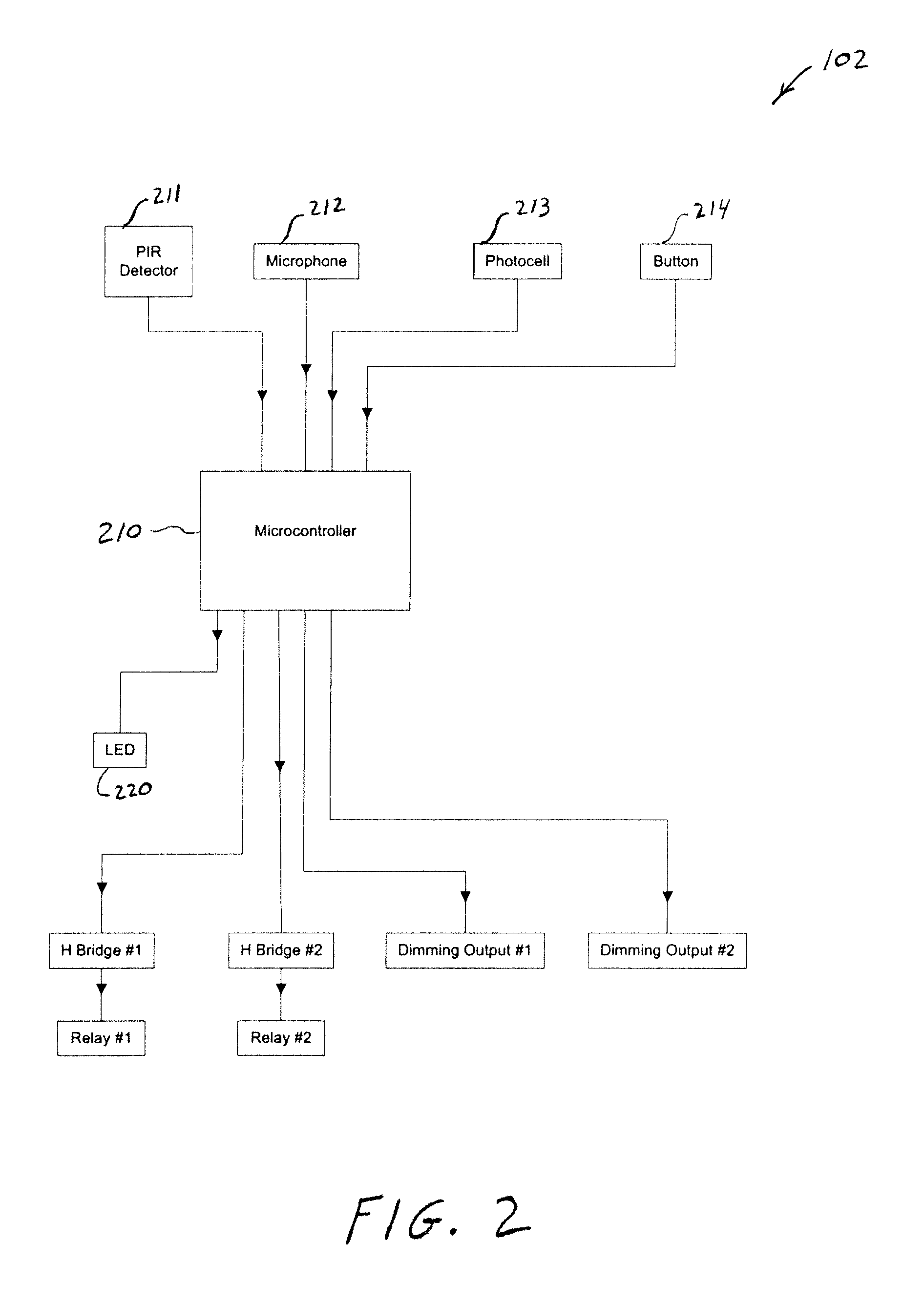Occupancy sensors programmed to determine loss of lamp life as lamp is used
a technology of occupancy sensors and lamps, applied in the field of occupancy sensors, can solve the problems of increasing lamp replacement costs and environmental waste, hazardous or dangerous conditions, and nothing currently known that can automatically alert users to the pending end of life of lamps
- Summary
- Abstract
- Description
- Claims
- Application Information
AI Technical Summary
Benefits of technology
Problems solved by technology
Method used
Image
Examples
Embodiment Construction
[0026]FIG. 1 shows a lighting control zone 100 that includes an occupancy sensor 102 coupled to four fluorescent lighting units 104, each containing two fluorescent lamps 106. Note that the number of lighting units coupled to sensor 102 and the number of fluorescent lamps 106 per lighting unit is merely illustrative and can be more or less than that shown. A lighting control zone may be, for example, an individual room or office, a classroom, a manufacturing area, a lobby, or other defined area whose lighting is controlled by an occupancy sensor. In this embodiment, occupancy sensor 102 is a ceiling mounted 360° sensor typically placed in private offices, vestibules, or small rooms. Sensor 102 is a line voltage sensor and has an integrated relay connected to power via Class 1 wiring 105 and to fluorescent lighting units 104 via Class 1 wiring 103. Sensor 102 also has an integrated microcontroller and firmware, and the ability to operate with preferably passive infrared (PIR) detecti...
PUM
 Login to View More
Login to View More Abstract
Description
Claims
Application Information
 Login to View More
Login to View More - R&D
- Intellectual Property
- Life Sciences
- Materials
- Tech Scout
- Unparalleled Data Quality
- Higher Quality Content
- 60% Fewer Hallucinations
Browse by: Latest US Patents, China's latest patents, Technical Efficacy Thesaurus, Application Domain, Technology Topic, Popular Technical Reports.
© 2025 PatSnap. All rights reserved.Legal|Privacy policy|Modern Slavery Act Transparency Statement|Sitemap|About US| Contact US: help@patsnap.com



